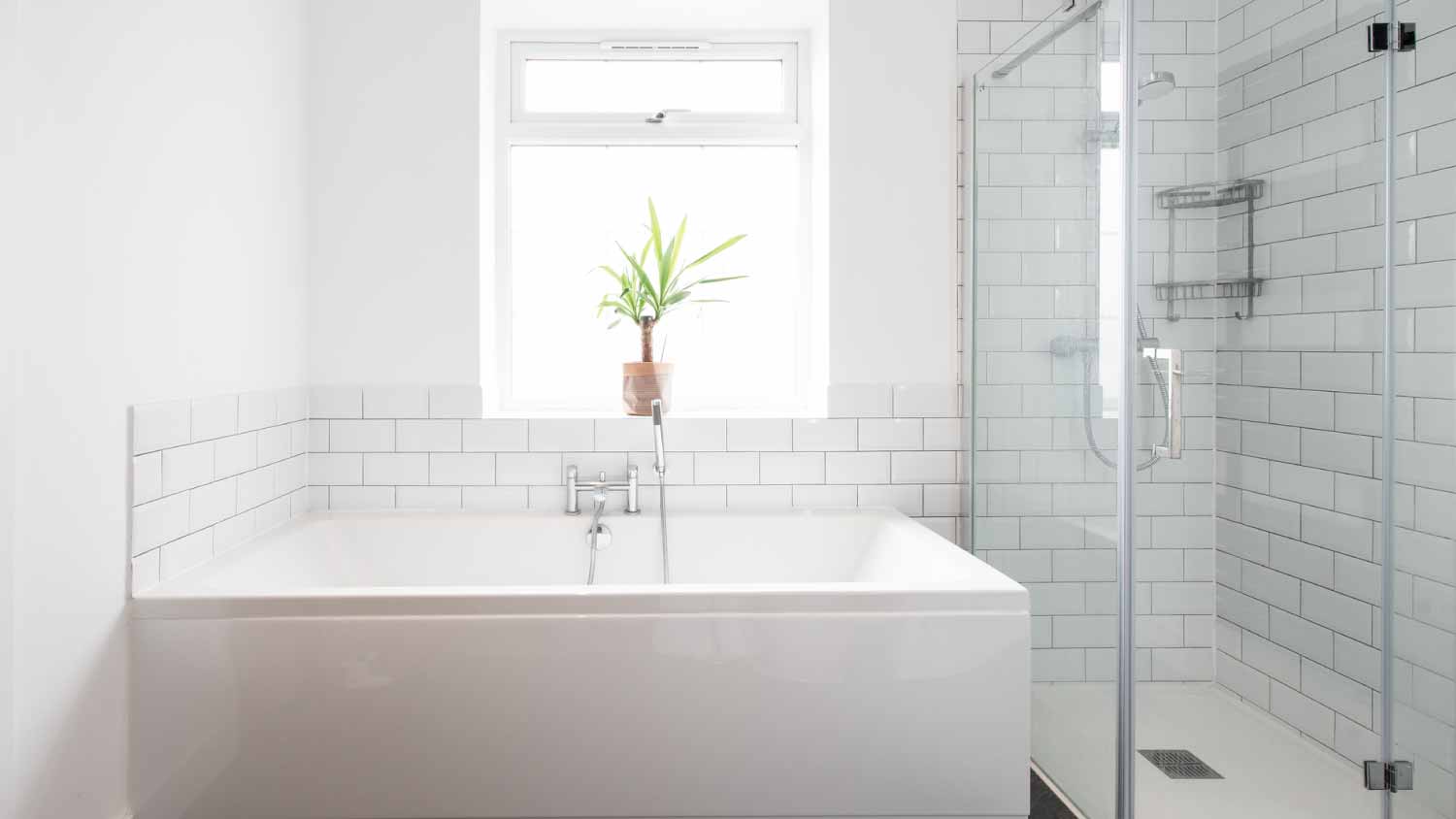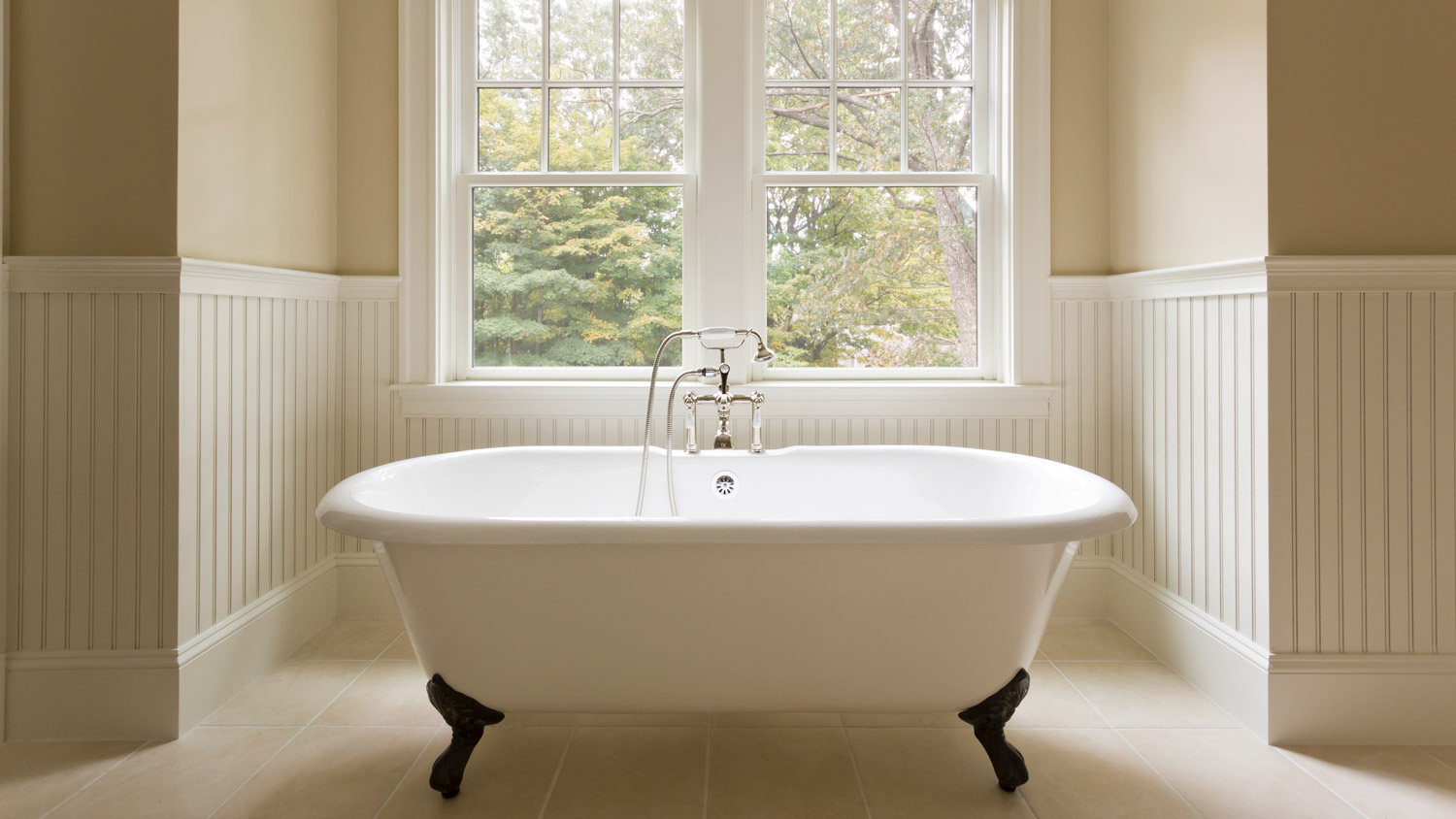
The cost of installing a bathtub or a shower liner depends on the type of tub or shower, size, and features. This guide will show what you can expect to pay for your project.
Installing a sink can save you money and can be done in an afternoon


Different sink types have different installation needs, but the pros know how to handle undermount, gasket sinks, and everything in between.
Plumbing projects can be challenging and risky for the average DIYer, so you’re better off hiring a sink installation company if there’s ever a doubt.
The cost of sink installation ranges from $250 to $650, but the pros may offer a discount if the new work is part of a larger bathroom renovation.
Though you can save by DIYing, you’re more likely to make costly mistakes that may lead to water damage without the right know-how.
Learning how to install a bathroom sink is no small feat, but if you’re handy, you can do it yourself in an afternoon—especially if you have a pair of helping hands. Or, you could hire a sink installation pro to get the job done faster (and with less hassle on your part).
Small DIY projects like applying a fresh coat of paint are a great way to save money during a remodel, but leave major plumbing upgrades to the pros. An inexperienced hand can cause burst pipes and water damage.
Before you remove your bathroom sink to make room for the new one, you’ll have to start by turning off the water supply valves beneath it. There are two valves, and you’ll want to turn them both completely to the right to stop the flow of water. If you can’t turn the valves because they’re stuck, don’t force it. You can find your main water shut-off valve to your home and turn it off instead.
Test the water to make sure it’s off before you start disconnecting your plumbing.
When you remove your sink, you’ll have to carefully disconnect the plumbing. Start by removing the P trap. The P trap always has some water in it, so you may want to disconnect it over a bucket or towel to avoid a mess. Disconnect the hot and cold water supply lines and remove your sink.
If you’re having problems removing your bathroom sink from the counter, try slipping a putty knife underneath the caulk to loosen it. You may need to use a chisel and hammer if your sink is glued to the countertop.
Installing the faucet is easier to do before you actually fit your new sink into place. Simply follow the instructions that came with your unit. Though every type of faucet is slightly different, you’ll likely need to place a gasket on the faucet opening (if your sink has a gasket) and then place the faucet over the gasket.
Screw the faucet into place, tightening the nuts on the underside of the sink. Caulk around the edge of your faucet (if your sink doesn’t have a gasket). After you install the faucet, install any extra hardware on your sink or vanity.

How you install your sink depends on the type. Some sinks come with a gasket to seal the unit in place. Other sinks need a layer of non-hardening plumber’s putty, caulking, or silicone around the bottom lip (for a drop-in sink) or the top lip (for an undermount sink).
To mount your sink, install the gasket if it comes with one. If not, apply caulk around the correct side of the lip. Drop or push the sink into place and secure the sink bolts or clips.
If your sink doesn’t come with clips, which is common for some porcelain or ceramic sinks, you’ll have to secure it using another method—like a two-part epoxy or brackets. Wait 24 hours for the caulk to completely set before you reconnect the plumbing.
Tip: If you’re installing an undermount sink, make sure you have a friend to help with the installation. Unlike a drop-in sink, this type can fall before it’s secured in place.
Once your caulk has dried, you can attach your drain and plumbing, adding caulk where needed. Some people caulk their drain and sink before reattaching the plumbing, but it’s usually easier to do as much as you can after the fact. This way, everything is lined up correctly and you don’t get gaps.
First, install your drain per the manufacturer’s instructions. This typically requires you to caulk the drain in place. Attach the drain’s tailpiece to the bottom of the sink. Make sure to install it with the accompanying gasket. If your model doesn’t come with a gasket, seal it with silicone caulk.
Reattach the P trap, water lines, and any other hardware, like a pop-up drain. Seal the connections with silicone caulk. When applying caulking, make sure you seal areas where water could migrate. This includes around the basin where the sink meets the countertop and/or where the sink attaches to a wall, as well as any other gaps you might find. Let the caulk dry for 24 hours before turning on the water and testing your work.
A sink can last decades, but you can replace your sink whenever you want. This is a common update within a larger bathroom remodel—especially if you remodel with a different design style. Homeowners usually choose to upgrade their sink when they get new countertops or a new vanity. That said, there are some signs you should start to think about a replacement:
Your sink is rusted or corroded
Your sink has cracks and other damage
Your drain is constantly clogging
You have an older sink with a low water volume
The sink design looks dated
Some of the time, you can fix individual issues, like reglazing a scratched porcelain sink or swapping out a rusty drain. If your sink has several issues and seems like it’s nearing the end of its life span, it may be time for a replacement.
For most homeowners, professional sink installation costs $250 to $650. Of course, the total cost depends on the type of bathroom sink. A simple pedestal sink will usually cost less than a trendy farmhouse sink. Drop-in sinks are usually the most affordable.
Overall, homeowners can usually save a little bit of money on sink installation if it’s part of a larger bathroom remodel. Contractors may be willing to cut a deal if you pair it with another job like converting a tub to a walk-in shower or replacing your vanity and countertops.
Plumbers charge between $50 and $200 per hour. This means that labor costs make up a significant portion of the overall cost of a new bathroom sink. Technically, homeowners can save a lot by tackling installation themselves and only paying for materials.
However, we don't recommend DIY plumbing projects. Mistakes can lead to serious problems with high repair costs, such as water damage. Unless you have solid plumbing experience, leave this job to your local sink installation pro.
Learning how to properly clean a bathroom sink is the key to maintenance. In general, you’ll want to use a non-abrasive all-purpose cleaner (for porcelain, stainless steel, and glass) or liquid dish soap (for copper and stone). Certain sinks, like copper or stone sinks, may need a protective wax or sealant to preserve the facade. Beyond that, these tips can help you extend the life span of your sink:
Clean your bathroom at least once a week to fight corrosion and mildew buildup.
Rinse away debris—like a rogue squeeze of toothpaste—before it dries down.
Recaulk around your sink when you start to notice peeling, cracking, and gaps.
Make timely repairs as issues arise.
Avoid using chemical clog removers, since they can damage piping over time.
Mariel Loveland and Kathryn Pomroy contributed to this article.
From average costs to expert advice, get all the answers you need to get your job done.

The cost of installing a bathtub or a shower liner depends on the type of tub or shower, size, and features. This guide will show what you can expect to pay for your project.

From budget-friendly builds to advanced plans fit for a gourmet chef, the price to build a kitchen can vary. Learn the average kitchen installation cost.

Remodeling your bathroom can add significant value to your home. Your bathroom remodel cost in Columbus, OH will depend on size, fixtures, materials, labor, and other factors.

An updated bathtub can give a bathroom a whole new look. Find out how much it costs to replace a bathtub in Austin, TX, including prices by type and labor costs.

An updated bathtub can give a bathroom a whole new look. Find out how much it costs to replace a bathtub in Atlanta, GA, including prices by type and labor costs.

An updated bathtub can give a bathroom a whole new look. Find out how much it costs to replace a bathtub in San Francisco, CA, including prices by type and labor costs.